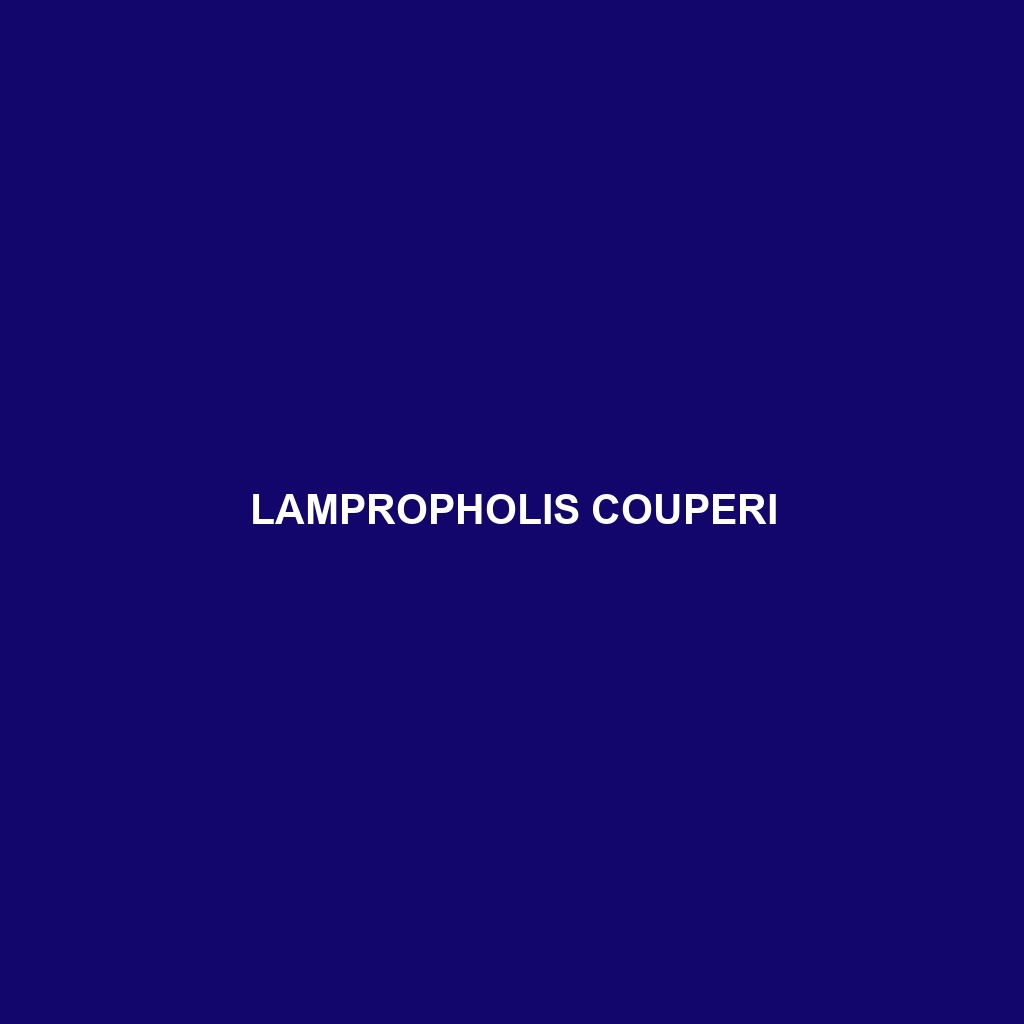Common Name
Lampropholis couperi
Scientific Name
Lampropholis couperi
Habitat
The Lampropholis couperi, commonly known as Couper’s skink, thrives in a variety of habitats throughout eastern Australia. This species predominantly inhabits a range of environments, including lush rainforests, coastal regions, and temperate forests. Couper’s skink has adapted well to both humid and dry climates, favoring areas with plenty of leaf litter and ground cover for shelter. Additionally, these skinks can be found in urban areas, where they utilize gardens and parks that mimic their natural habitats. The combination of these diverse habitats plays a crucial role in their survival and reproduction.
Physical Characteristics
Couper’s skink is a small to medium-sized lizard, typically measuring between 15 to 25 cm in total length. This species features a streamlined body with a pointed snout and short limbs. The coloration of Lampropholis couperi varies significantly, with adults commonly showing a vibrant greenish-brown or olive coloration adorned with subtle patterning. One distinctive feature is the smooth, shiny scales that reflect light, aiding in camouflage within their leafy surroundings. Their predominate coloration helps them blend seamlessly into the undergrowth, providing an effective defense against predators.
Behavior
Behaviorally, Lampropholis couperi is primarily diurnal, which means it is most active during the day. This species exhibits a range of interesting behaviors, such as basking in the sun to regulate their body temperature. Socially, these skinks can be solitary, although they may occasionally be observed basking in groups during cooler months. Mating rituals typically occur in the warmer months, where males engage in displays of dominance, including head-bobbing and displaying vibrant colors. Their nocturnal behavior is less common, but they have been known to occasionally forage for insects after sunset.
Diet
The diet of Lampropholis couperi consists mainly of small invertebrates, categorizing them as insectivores. These skinks primarily feed on a variety of insects, including crickets, ants, and spiders, complementing their diet with occasional plant matter. The feeding patterns of Couper’s skink involve foraging on the forest floor, using their excellent vision to locate prey among the leaf litter. This diet not only supports their growth but also plays a vital role in controlling insect populations within their habitats.
Reproduction
Reproduction in Lampropholis couperi generally occurs during the spring and summer months. Mating typically takes place in late spring, following which females produce a clutch of 2 to 10 eggs in late summer. The egg-laying process occurs in well-protected sites, such as under foliage or within moist soil, to ensure their safety from predators. The gestation period can last anywhere from six to eight weeks, after which the young hatch fully formed and are independent from birth. Parental care is nonexistent, as the skinks rely on their instinctual behaviors to survive and thrive.
Conservation Status
As of the latest assessments, Lampropholis couperi is classified as of “Least Concern” according to the IUCN Red List. While they are not currently endangered, habitat loss due to urban development and deforestation poses a potential threat to their populations. Conservation efforts aimed at preserving their natural habitats, as well as public education on the importance of biodiversity, are crucial to ensuring the long-term survival of this species. Continued monitoring and research are essential to identify any emerging threats and to help sustain viable populations in the wild.
Interesting Facts
One of the most intriguing facts about Lampropholis couperi is its ability to regenerate its tail after losing it due to predation. This unique adaptation allows the skink to escape danger while providing it the opportunity to survive and continue its life cycle. Additionally, this skink species demonstrates a variety of colorations depending on its environment, showcasing remarkable adaptability that aids in its camouflage across different habitats.
Role in Ecosystem
Lampropholis couperi plays a significant role in maintaining the ecological balance of their environments. As insectivores, they help control insect populations, which can otherwise grow unchecked, leading to imbalances in the ecosystem. Their presence contributes to pollinator populations, as certain insects thrive on the organic matter within their habitat. Furthermore, Couper’s skinks serve as prey for larger predators, thus representing an integral part of the food web. Overall, their ecological role underscores their importance in sustaining diverse ecosystems across eastern Australia.
